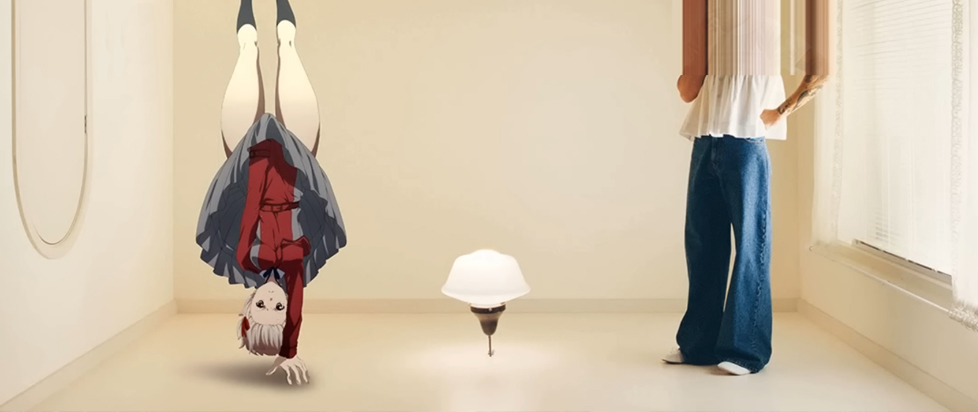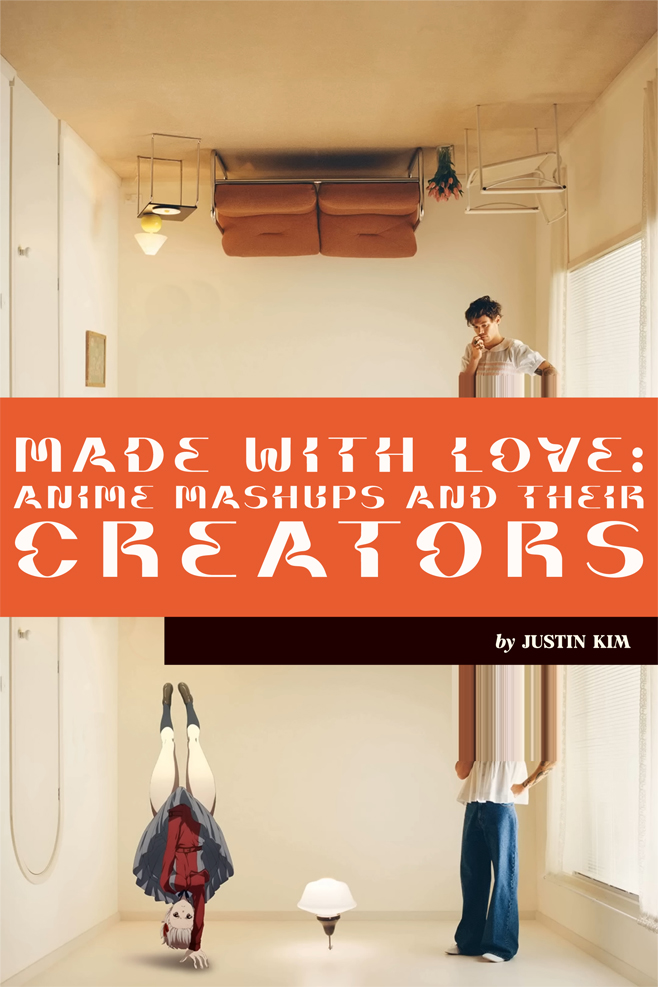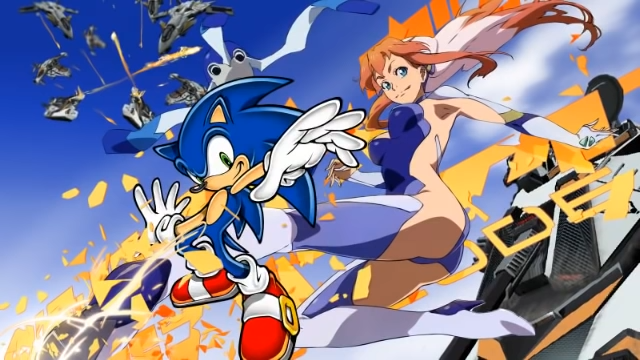
Made With Love: Anime Mashups and Their Creators
This is a feature excerpt from Unwinnable Monthly #172. If you like what you see, grab the magazine for less than ten dollars, or subscribe and get all future magazines for half price.
———

What the hell is an anime mashup?
Anime mashups are a peculiar niche in the online music sphere. Their sources are similar yet distinct enough to be combined into a new and harmonious song. At least one of their primary sources comes from an anime production or a videogame. Throw some high-pitched vocals into the mix and a cultural phenomenon unique to the interconnectivity of the internet arises.
These traits are present in a lot of mashups produced by the scene. secefece’s “Give It All Your Sailor Fuku (Lil Jon vs Lucky Star)” sets the vocals of Lil Jon’s 125 BPM club banger “Give It All U Got” to the hyperactive 150 BPM beat of the iconic anime opening “Take It! Sailor Uniform.” Zach CG’s “Wishing For a Hunie [Remastered],” fuses Skee-Lo’s pining for a beautiful lover in “I Wish” with the main theme of erotic dating sim HuniePop, where you romance a whole hive of gorgeous “hunnies.” Anime mashups can only exist in a world where technology helps us find and forge creative links between songs without direct connections.
It’s not just shitposts!
I can’t fault those who don’t look past this niche-within-a-niche genre’s quirks when chances are their only exposure to mashups may be DaymanOurSavior’s “Snow halation but shawty’s like a melody in my head” (if you’re reading this Dayman, I mean no offense; it’s a fire mashup). It’s easy to dismiss the anime mashup scene as novelty joke songs without much substance. But to assume this subscene of music lacks artistic merit is to ignore the love and dedication that go into an under-appreciated craft.
The scene’s filled with talented and passionate artists but allow me to highlight three anime mashup artists in the English-speaking world who’ve been leading the charge in keeping the community alive and thriving. My goal’s to shed more light on the part of this scene that tends to go unnoticed: The people and passion behind the mashups.
HandBraJeans: An unsung community hero
HandBraJeans (HBJ) and I first started corresponding during the pandemic. When we caught up again for this article, I was shocked by him recalling a YouTube playlist I made years ago as a send-off for his retirement (don’t worry, he came back). This shock led to understanding when he explained his philosophy of making time for those who make time for him. We see this approach on videos such as “Safe From Rain | Girls’ Last Tour × Capital Cities Mashup” where he took the time to respond to as many comments as possible.
Yet for someone who’s active in speaking with fans as well as advising and mentoring other mashup artists, he’s not too public about it all. “There’s a lot more people who are far more popular than me but I like being this person behind the scenes,” he chuckles when discussing how he interacts with the community. A comparison between his own uploads (numbering in the upper 80s) and a playlist for mashups he helped with (numbering at more than 200) shows a strong dedication to helping others and keeping the anime mashup spirit alive. He says that “One of the whole reasons why I think feedback should exist in the mashup world is so that people end up liking their own mashups even more. I firmly believe that if you like what you’re doing and make a continual effort to improve, the longer you’ll participate in this artform and grow as a person respectively.”

A key part of HBJ’s mashup style is his effort to maintain balance. In “Color Washed | Mitsuboshi Colors × Knox Hamilton × Xan Griffin Mashup,” he recreated the “Colors Power ni Omakasero!” melody in FL Studio to make it better fit the “Washed Up Together” instrumental, a practice where he respects a source’s original vision while balancing his own intent as a mashup artist.
In songs like the synthwave mashup “My Dearest Zero | Guilty Crown × The Weeknd Mashup” where the sources include both Western and Eastern music, HBJ tries to balance each respective culture’s production values, noting that “Where I balance my mashups, I also balance the Western and Eastern philosophies of: How loud do you mix a vocal? How wide do you make the vocal sound? And which instrument do you give time to shine?” For this track he made sure to appreciate his sources by incorporating both of their melodies. “Those synthesizers that you hear in the chorus are all me . . . I layered like five synthesizers on top of each other. And the melody in the first chorus is different from the last one. The first one follows the melody of the original Weeknd song but the last synthesizer follows the counter melody in the background of the supercell song. The whole reason why I did that synthesizer work was to give a nod to the original source material while adding my own little details in there.”
To him, balance in mashups is a sign of appreciation for each source that made a contribution to the overall product, an attitude that also comes from his background in architecture. When describing his style of balance, he says, “In architecture, context is important. If you’re designing a building, how do we establish a built form to be respectful to the street life and to be aesthetically compatible with its surroundings? There’s a response to context. And similarly, this is why I balance the musical vision of others with my own.”
HBJ’s a unique creator who cares a lot about the people he encounters. Whether it’s giving another artist a helping hand or respecting an artist’s original vision when mashing up their song, he demonstrates a love for connection and community wherever he goes.
Triple-Q: Meme and mashup veteran
Make no mistake; Triple-Q may appear to be just a certified shitposter but they also have 11 years under their belt as a dedicated anime mashup artist. They’re also one of the most prolific and well-known creators in the scene. Out of all their videos, memes and mashups both, at least twenty-four have reached at one million or more views. It also helps that they’re a professional illustrator and graphic designer who likes to draw the cover art for their works.
Many of Triple-Q’s mashups follow the standard anime mashup formula of having two songs riff off each other with perhaps a third source to accent the pairing, such as “As the Flower Was – Lycoris Recoil vs. Harry Styles,” but having less sources doesn’t diminish the quality of the final product. They also re-use sources across multiple projects such as with the “Ocean halation – Love Live! vs. Yellowcard” mashup being one of many “Snow halation” mashups in their repertoire. Another frequent technique Triple-Q uses across their discography is sampling dialogue in pieces such as “I Really Want to See the Fireworks at Your House – Cyberpunk: Edgerunners vs. Katy Perry.” In this case, they had voice actors perform a speculative exchange between the lead Edgerunners characters as part of the mashup’s theme.
The patterns in Triple-Q’s style may be standard for an artist of their caliber but these patterns’ expected presence’s exactly why one of their less popular mashups makes for an interesting case study.

“Sonic the Mighty!: Act 3” is fascinating because it’s unconventional both as a Triple-Q mashup and as an anime mashup. It breaks the standard formula of limited sources by using five of them yet three are similar enough to form a representative group since they share the same musical motifs as music for the Planet Wisp level in the Sonic franchise. The Planet Wisp songs also appear in other Triple-Q mashups such as “Heaven’s Symphony” but as far as I’m aware “Sonic the Mighty!: Act 3” is the only one that uses three different takes on the motifs.
And finally, Triple-Q’s mashups almost always use a musical vocal source yet the closest to that we have here are two dialogue samples from the Sonic games that follow their usual practice. Most of the song’s an orchestral instrumental mashup, something rare both as a Triple-Q production and as an anime mashup in general. The entire work’s an experimental piece from a long-time creator with a particular style who cares enough to find new avenues of self-expression.
Triple-Q’s love for making mashups is evident in their craft. The sheer volume of works they’ve released over a period of 11 years reaches well into the hundreds, something no one would achieve if they were only doing it as a passing interest. Through it all they still find the time to evolve the way they make their art.
nakinyko: An enigmatic godfather
nakinyko (pronounced knack-ee-nigh-ko) is one of the forbearers of the subgenre as we know it today and I don’t say this to embellish him. He started to make anime mashups in the late 2000’s after being inspired by artists such as Girl Talk and The Hood Internet, noting that “Their mixes had this feeling of breaking musical boundaries while also being silly or goofy, and I think I just wanted to make stuff with the same concept, but incorporating anime and video game music, which I didn’t really hear much of at the time.” With a long career in the anime mashup world, it’s no surprise that other artists such as Triple-Q name him as one of the reasons they began making their own mashups. Yet for someone who’s been around for so long, he keeps a minimalist presence in the space as well.

This enigmatic godfather is known for his eclectic range of sources, consistent quality of releases, and ability to weave multiple sources together as if they were one song. His current style of mashups is inspired by the indie rock band The Go! Team and the plunderphonics group The Avalanches, who try, as he puts it, “ . . . to create a new song using smaller bits of forgotten records.” We see this in songs of his such as “OK,” where ten different songs blend together as if they were made to be with each other. As a comparison, the title track of one of nakinyko’s favorite Avalanches albums, “Since I Left You,” samples seventeen songs. It’s no coincidence that “OK” and “Since I Left You” share a mosaic style of production where each source’s used with intention in service of the overall song’s broader vision. To him, “ . . . part of the fun of making mashups is trying to sample smaller bits and pieces of songs, like drum sounds or riffs, and using them in creative ways.”
———
Justin Kim is a designer, game maker, Tarot reader and writer who enjoys sharing his interests to a captive audience – hey, get back here! In the meantime, find his socials on heyjustinkim.com or follow on Twitter.
You’ve been reading an excerpt from Unwinnable Monthly Issue 172.
To read the article in its entirety, please purchase the issue from the shop or sign up for a subscription to Unwinnable Monthly!




